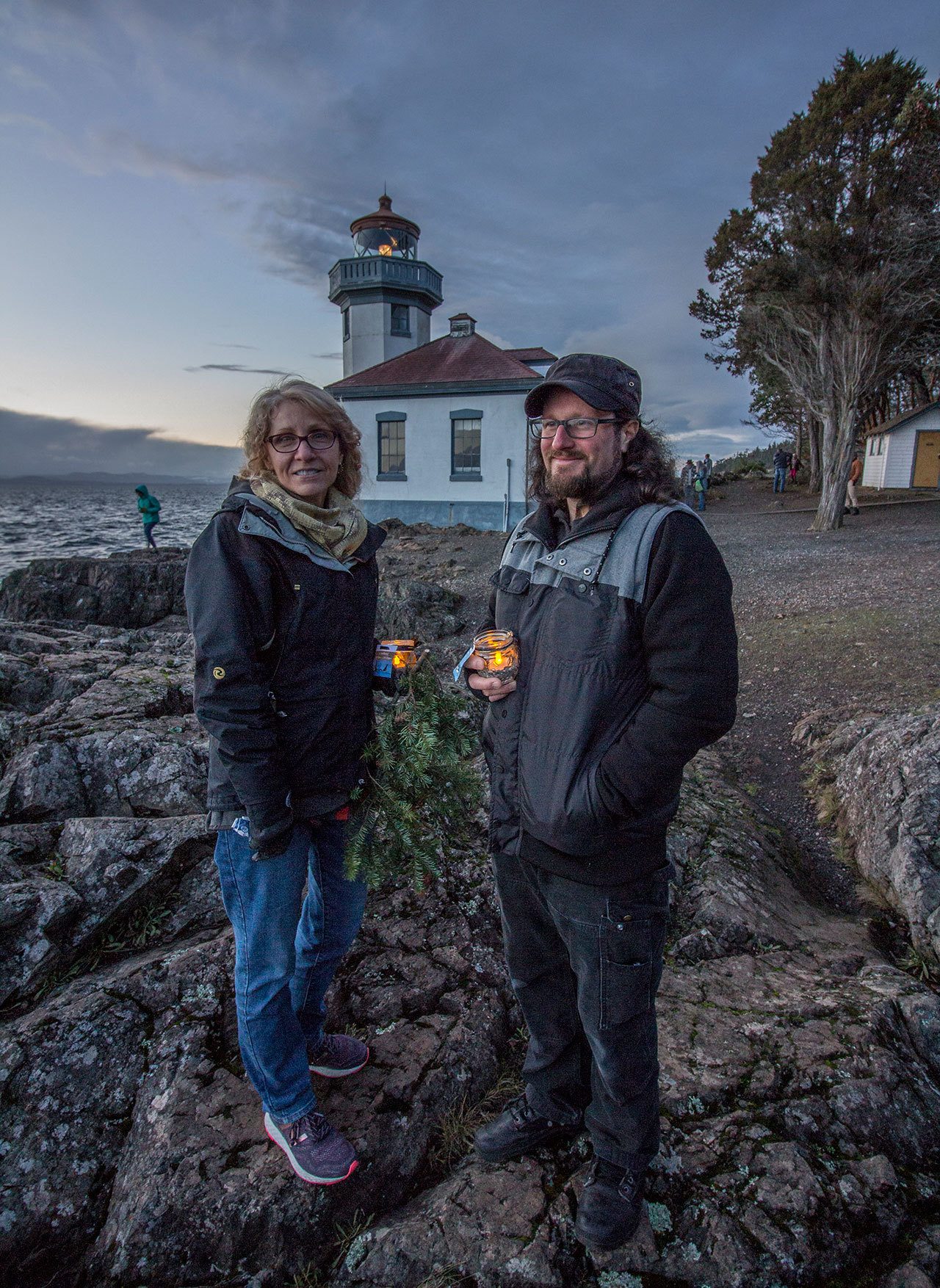As the sun set on Dec. 27, around 40 people gathered at Lime Kiln State Park to say goodbye to the six Southern Resident killer whales whose light also faded in 2016.
There were only two weeks left in the year when the Southern Resident killer whale known as J-34, or DoubleStuf, was found dead off the coast of Canada. It prompted Orca Network volunteers to create candlelight vigils to remember the roughly 19-year-old male and his five fellow orcas who called the Salish Sea home for parts of the year and passed in 2016.
“I was devasted,” said Cindy Hansen, Orca Network’s education and outreach coordinator, when she heard of J-34’s death. “I watched him grow up his entire life.”
At 4:45 p.m., attendees at the wind-blown Lime Kiln held battery-powered tea lights to remember the orcas, just as vigil-keepers at Langley Whale Center, Alki Beach, Lummi Island and individuals throughout the area, did the same.
“It’s hard to explain why people care about the orcas here,” said Hansen, who organized the San Juan vigil. “It’s just a part of them.”
Like vigil attendee Blake Budwill, a freshman at Friday Harbor High School, who donates his tips from playing drums to the Center for Whale Research in Friday Harbor. Or Kevin Culmback, who moved to San Juan Island in 1998 and worked for San Juan Safaris, the year J-34 was born.
“That family has always been close to my heart,” said Culmback at the vigil.
Last week, the Canadian Department of Fisheries and Oceans discovered that J-34 died of blunt trauma to his head, which could mean he was hit by a vessel.
“We need everyone to work for the common good and decrease shipping traffic,” said Hansen.
Research from the Friends of the San Juans found that there would be a 31 percent increase in vessel traffic in the Salish Sea if the currently proposed projects from the U.S. and Canada were passed. This includes the Kinder Morgan Trans Mountain pipeline expansion, which was approved by the Canadian federal government in November.
To Ken Balcomb of the Center for Whale Research, the main issue is food.
“This most recent death, we don’t know the exact source yet, but we know orcas have died from lack of nutrition,” said Balcomb.
Researchers have called to breach four dams in the lower Snake River to open more spawning ground for Chinook salmon. The salmon from the Columbia River are the orcas’ main diet and have been on the endangered species list for about six more years than the Southern Resident killer whales.
“People need to have elected officials pressure government agencies to restore wild salmon to river systems,” said Balcomb.
Honoring Orcas: Below is a list of Southern Resident killer whales, who partially called the Salish Sea home, and passed in 2016, according to the Orca Network.
J-55: The new calf was discovered in January 2016 and died by February.
L-95: 20-year-old Nigel was found dead in March. His satellite tag, from February, possibly caused a fungal infection that weakened his immune system.
J-14: Samish, who was born in 1974, went missing in August and was the mother of six known calves. (Many orcas’ bodies are not recovered, and they are declared missing, not dead.)
J-28: Polaris, born in the early 1990s, died of possible birthing complications in October, after appearing emaciated for several months.
J-54: Dipper, J-28’s son, was born in December 2015 and went missing the following October.
J-34: The roughly 19-year-old male, known as DoubleStuf, was found dead off the coast of Canada, after suffering from blunt trauma to his head.



